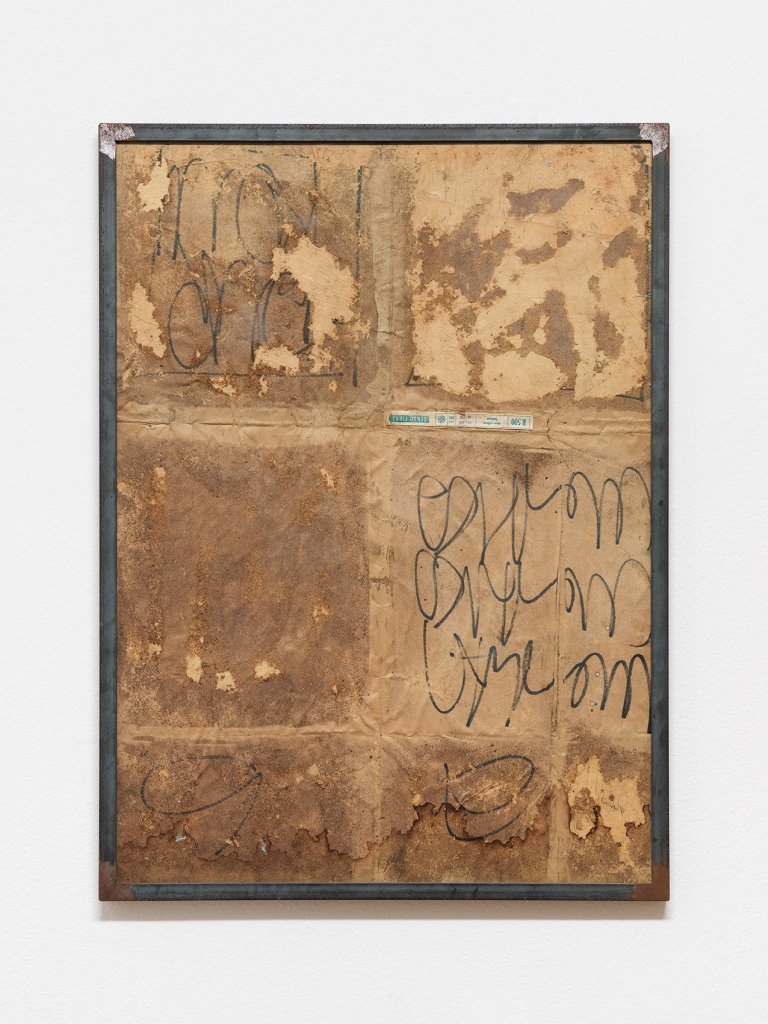Renata Boero by Paolo Fossati (anno 1977)
We propose a translation and contextualization of a 1977 text by seminal art historian Paolo Fossati about Renata Boero’s painting.
If one were to name a decade of the 20th century where the medium of painting reached rock bottom, the 1970s would be most people’s pick. Arguments like this one by John Yau show how this general opinion is due to a certain dominance of New York as the centre of art history at the time, and its main protagonists from the conceptual and minimal scenes rejecting the painting medium altogether. We believe Europeans didn’t have it so different, and an extract from a 1977 essay by the seminal Italian art historian Paolo Fossati about the paintings of Renata Boero at Galleria Martano in Turin justifies this belief.

Previously unpublished in English, we propose this essay, which is imbued with a certain anti-painting sense, to help picture the climate in the art and art writing worlds in the 1970s Italy. It is a deeply philosophical text, in which Paolo Fossati uses Renata Boero’s work as a case study to prove his point within a specific theory about painting in general. Hegelian undertones are clearly there in the way he hints at a progressive conception of history, in which the past is but the starting point of the present, which itself becomes the necessary condition for the future. It is as though her painting allows him to speculate that history can repeat itself, yet with a further universe that is created each time, where “new historical and anthropological notions” re-enter the museum as a symbol of the place where history resides. Moreover, Fossati pays great attention to a Hegelian spirit of the time, drawing a detailed landscape of current crucial phrases and ideas that are not so much about actual paintings as they are about the concept of painting.

Also remarkable is the departure from a merely descriptive writing about Renata Boero’s work, an approach that is instead largely present in art writing from 1950s and 60s (see the early reviews by Donald Judd for an example). The lack of reference to the way the work looks is symptomatic of a 1970s attention for the revolutionary political role art should play in society, as opposed to its discarded nature as a mere object of aesthetic pleasure. In this regard, Renata Boero’s work is analysed from the point of view of its making process rather than its formal qualities, confirming both the artist’s pioneering approach, which anticipated the later process-based trends in painting, and the debt to conceptualism of Fossati’s art writing. Unsurprisingly, many expressions in the text mix this theoretical attitude with a focus on the physicality of the painting and its making, for example the use of words such as “tactile,” “physical,” “concrete,” and an attention to the physical parts of the painting (frame, pigments, etc.).

This English translation, which was proofread by Olivia Taylor, follows the Italian version in the way the text conveys the themes mentioned so far, while attempting to render the original in its sometimes abrupt rhythm and colloquial tone.
***
“Beyond the limits of painting,” and “beyond the act of painting” are two popular expressions these days. Along with “return to painting,” “to paint a painting,” or “painting’s painting,” they form what is no longer understandable as mere commonplace talk, but as a true ritual. Taken seriously, these phrases refer to returned cultural phenomena, where painting and the job of the painter might no longer be relevant, alike expired figurative formulas, concepts, and hypotheses of different nature. With slight fear, I wonder whether Renata Boero’s work doesn’t follow this rhetoric too, just like some commentators believe. But even though it did, it would be no dismissal of it, especially today. It would rather be the recognition of something present among us, of a process that gives food for thought and excitement. The debate around her work lays in the very definition of painting today, rather than in those ancient phenomena.
Let’s follow but one thread: each canvas suggests that the act of painting is not innocent. It is a at least a cultural compromise, where each brushstroke has already absorbed, is absorbing, and will absorb signs and forms of an entire past, of habits and customs that have penetrated those pigments, those brushes and spatulas, down until the canvas and frame if you will. To know is but to recognise, and each future resembles revival rather than novelty. The contemporary is a symbol—whether mental, alchemic, literary, or phallic—of a mystical marriage between the past and the future. Rublev, Malevic, Beato Angelico, Mondrian, Parmigianino, and Duchamp hunt the sleepy nights of those artists claiming today that “painting is painting!” One might wonder whether those artists still have some conscious or unconscious awareness of the past, and if so whether this doesn’t come from their collection of cheap art books or pop music records. Perhaps it doesn’t matter.
The sense in which Renata Boero’s work is pictorial is twofold. On the one hand, there is a physical and concrete participation rather than mental or allegorical in the making process, which is infused by past cultural phenomena and anthropological forms seen in previous symbiosis. On the other hand, the reading of the work is upside down, but not in a merely visual or analytic way. It evolves some kind of nostalgia for totality of gestures and modes, those that are capable of not only evoking an entire universe (this would be an example of “return to painting”), but also to make this universe tactile and alive, if not participated.
If this is true, Renata Boero’s work lays before the act of painting, where the sense of the process is being constituted, beyond the canvas, the brushes and the frames, where the cultural and literal museum frameworks are forgotten, only to allow a re-entry in the museum with new historical and anthropological notions.
March 24, 2020
